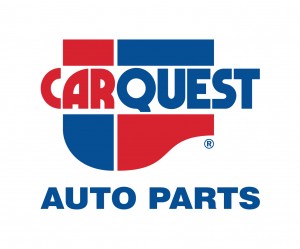Defective Drop Light Burn Injury Lawsuit
 This lawsuit arose out of severe burns suffered by our client while working at his job at the Denville Firestone. Plaintiff sued defendants, Carquest Corporation, Carquest Products, Inc., TMC Enterprises, Voltec Industries, TASCO and BWP Distributors, Inc. for product liability relating to their manufacture and sale of an incandescent work light to plaintiff’s employer, Denville Firestone. The accident happened as our client was working at his assigned task at the Denville Firestone.
This lawsuit arose out of severe burns suffered by our client while working at his job at the Denville Firestone. Plaintiff sued defendants, Carquest Corporation, Carquest Products, Inc., TMC Enterprises, Voltec Industries, TASCO and BWP Distributors, Inc. for product liability relating to their manufacture and sale of an incandescent work light to plaintiff’s employer, Denville Firestone. The accident happened as our client was working at his assigned task at the Denville Firestone.
Plaintiff alleged that the light was a defective product in that it was not “reasonably fit, suitable and safe for its intended or reasonably foreseeable purpose.” N.J.S.A. 2A:58C-2; Roberts v. Rich Foods, Inc., 139 N.J. 365 (1995). It was our position that the light never should have been marketed and sold to Firestone because it is unsafe for use in a commercial automotive repair facility — like the Denville Firestone — where gasoline and other flammables are present. After more than 3 ½ years of litigation — and after all fact discovery, expert discovery and dispositive motions had been completed — the case settled for $4.7 million.
The defendants vigorously defended the case by arguing that 1) incandescent work lights have been used in automotive repair garages for 50 years without any problems; 2) that numerous other manufacturers sell incandescent work lights to automotive repair shops; 3) that the accident was wholly caused by the negligence of plaintiff’s employer (Firestone) by allowing workers to drain fuel tanks using rickety stands right next to the work light; and 4) that there was no proof that the work light itself caused the fire.This was a very difficult case which was vigorously litigated by all parties. The defendants were represented by three different law firms, and substantial resources were expended by us on this case.
There was significant motion practice throughout this case. For example, we successfully opposed defendants’ attempts to bring in plaintiff’s employer, Firestone as a party in this case. This was a significant win from our perspective as Firestone would not have been on the verdict sheet at the trial of this matter, and therefore no apportionment of liability could be made against it. We also prevailed on a motion for summary judgment dismissing defendants’ defense of comparative negligence. This was a critical win because defendants would not have been able to blame plaintiff for causing the gasoline spill, or using the light in the vicinity of the gasoline spill. In addition, at the time of the settlement, plaintiff had a pending motion for summary judgment on the issues of design defect, failure to warn and proximate cause. Plaintiff also had pending Daubert motions seeking to dismiss many of the defense experts’ opinions. In addition, we had opposed several summary judgment and Daubert cross-motions filed by each of the defendants. It was clear to us that the strength of our pending motions induced the defendants to settle this matter.
There was significant expert testimony and discovery throughout the case. In all, the parties named 13 different experts in a broad spectrum of specialties such as fire cause and origin, electrical engineering, warnings, psychological injuries, automotive use/procedures, plastic surgery and burns. Given the sophistication of the various disciplines, significant preparation was necessary to depose each of the expert witnesses. In all, there were 35 depositions taken in this case, 9 of which were expert witnesses.
One of the major issues we developed was that defendants had misrepresented to Underwriters Laboratories (“UL”) (the company that tested and certified the product as safe) that the product would be only sold for residential use. We took the depositions of UL representatives and we were able to develop through those depositions that the defendants misled UL into believing that the product would be sold for only residential use. This is significant because the UL representatives testified that they would not have approved the product for any use in a commercial establishment such as Firestone, and the defendants conceded that they would not have sold the product without a UL approval. This was one of the critical theories of our case.
We were also able to develop through the depositions of defendants’ own experts that the product never should have been sold to plaintiff’s employer because it would be violative of the National Electric Code to have such a product in an automotive repair shop which handled gasoline and other flammables. These admissions from each of the defense liability experts solidified our case that the product was defectively designed because it was not “reasonably fit, suitable and safe for its intended or reasonably foreseeable purpose.” We were able to gain these admissions even though many merchants sell these types of lights to commercial automotive repair shops every day. These admissions — coupled with the UL depositions — allowed us to create a very strong case which ultimately forced the defendants to settle this case.


Comments